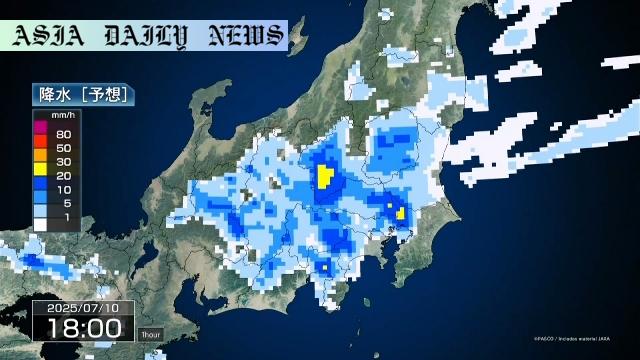Downpours could bring flooding, landslides, and hazardous conditions to Tokyo and nearby areas from late Thursday.
Atmospheric conditions in Tokyo are unstable due to warm, moist air and a rain front near Tohoku.
Heavy downpours may result in up to 200mm of rain in the Kanto-Koshin region, including Tokyo.
Flooding risks include low-lying areas, drainage overflow, swollen rivers, and landslides.
Authorities urge caution regarding open manholes, underground flooding, and severe weather events like gusts or tornadoes.

Severe Downpours Expected to Impact Tokyo and Neighboring Areas
The Japan Meteorological Agency (JMA) has issued a serious warning, forecasting extreme torrential downpours that could heavily impact Tokyo and adjacent regions, starting late Thursday afternoon and potentially continuing into the night. According to officials, unstable weather conditions in the Pacific coastal areas of eastern and western Japan arise from the combination of a rain front near the Tohoku region and warm, moist air masses. This has heightened the possibility of heavy rain bands forming over central Tokyo, particularly in the 23 wards, Tama region, and surrounding prefectures, including Ibaraki, Tochigi, Gunma, Chiba, and Saitama.
Localized Flooding and Landslides Pose Risks
Rainfall intensity could reach up to 80 millimeters per hour in areas north of Tokyo and culminate in as much as 200 millimeters of rainfall across the broader Kanto-Koshin region by midday Friday. These conditions amplify the risk of rain-induced disasters, such as flooding in low-lying urban areas, swollen rivers, and landslides in hilly or mountainous terrains. Urban infrastructure, such as roads and buildings, might exacerbate runoff in densely developed zones, challenging drainage systems and increasing vulnerabilities.
Potential Hazards in Urban and Underground Areas
Officials have highlighted numerous hazards, including open manholes resulting from overwhelmed drainage systems and rapidly accumulating water in low-lying or underground passages. Streets may transform into rushing streams, endangering pedestrians and vehicles. Historical instances point to fatal accidents, such as pedestrians being swept away or falling into concealed open manholes. Drivers should exercise extreme caution, particularly in underpasses and during nighttime when visibility is low, and avoid traversing flooded areas.
Mitigating Weather-Related Risks
Authorities strongly recommend staying updated on weather alerts, taking precautionary measures like preparing emergency supplies, and avoiding non-essential movement during heavy rains. Thoughtfulness should also extend to monitoring family safety, especially in zones vulnerable to severe flooding or landslides. Ensuring safe evacuation routes in case of emergencies will be crucial during this time.
Broader Implications of Weather Events
This announcement underscores the dangers cities face as climate systems evolve and extreme weather incidents grow more frequent. Policymakers must strategize steps to enhance urban resilience, including better drainage infrastructures, public awareness campaigns, and reinforced emergency protocols within vulnerable regions.



Commentary
The Growing Impact of Extreme Weather Events
The warnings issued for Tokyo are a stark reminder of how extreme weather events are becoming more frequent, often catching urban populations unprepared. Torrential rain forecasts are not just an inconvenience; they highlight the risks infrastructure faces as cities expand and more areas become prone to floods. For Tokyo, a sprawling metropolis, the challenges are even greater due to the dense concentration of buildings and impermeable surfaces that aggravate water accumulation during heavy rains.
Urban Challenges in Managing Floods
One insight I draw here is the need for cities to invest robustly in drainage systems and infrastructure upgrades to counter these severe weather implications. Urban planning cannot ignore the disastrous outcomes when drainage systems fail, and roads transform into rivers, trapping or endangering people. Simple awareness campaigns about avoiding flooded areas or choosing alternate routes can save lives, as indicated by the troubling example of open manholes during floods.
The Role of Preparedness and Resilience
Public preparedness is key, but individuals will always be at risk if authorities fail to modernize essential infrastructure. Coordinated governmental and community actions are necessary to prevent avoidable tragedies during such events. As weather systems grow volatile, my hope is that critical lessons from regions like Tokyo encourage similar global efforts to enhance resilience against climate extremes.